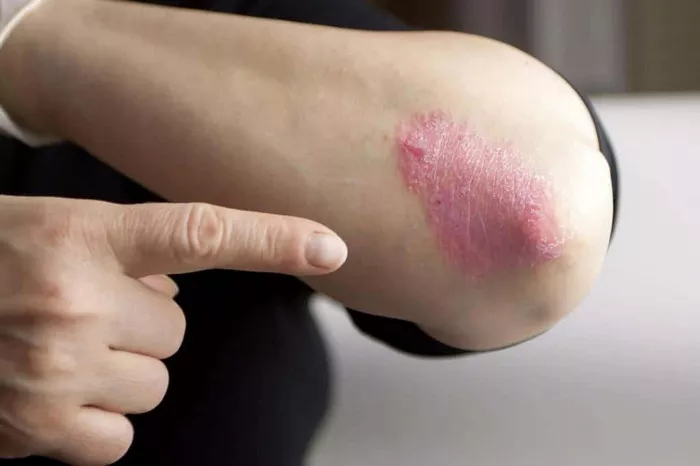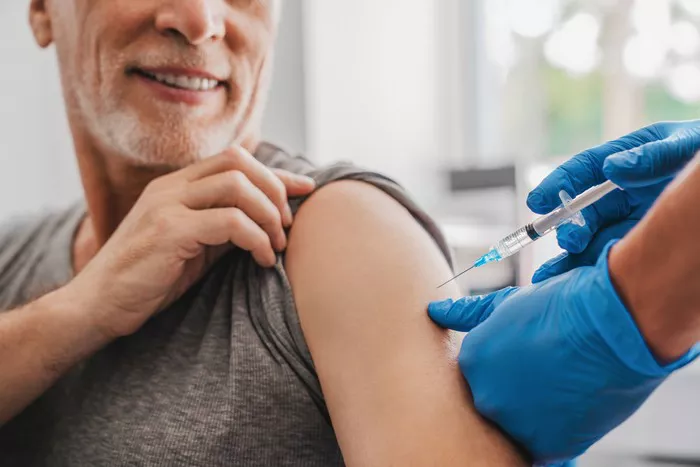Psoriasis, a chronic autoimmune disorder, manifests through the skin, affecting millions worldwide. Among its varied presentations, psoriasis on the elbows is a common occurrence, often accompanied by discomfort and aesthetic concerns. Understanding the intricate mechanisms behind its development is crucial for effective management and treatment. In this article, we delve into the multifaceted factors contributing to psoriasis on the elbows, shedding light on its pathogenesis and potential therapeutic avenues.
Psoriasis: Unraveling the Mystery
Psoriasis is characterized by aberrant immune responses, leading to the rapid turnover of skin cells. This accelerated proliferation results in the formation of thick, red patches topped with silvery scales, known as plaques. While the precise etiology remains elusive, a combination of genetic predisposition, environmental triggers, and immune dysregulation underpins its development.
Genetic Predisposition: The Blueprint of Vulnerability
Family history plays a significant role in the predisposition to psoriasis, with a complex interplay of genetic factors contributing to susceptibility. Genome-wide association studies (GWAS) have identified several genetic loci associated with psoriasis, highlighting the involvement of immune-related pathways and cytokine signaling. Variants in genes encoding for proteins involved in antigen presentation, such as HLA-C and HLA-B, confer increased risk, predisposing individuals to develop psoriasis upon exposure to triggering factors.
Environmental Triggers: Provoking the Immune Response
While genetic susceptibility sets the stage for psoriasis, environmental triggers often act as catalysts, precipitating disease onset or exacerbating existing symptoms. Factors such as trauma, infections, stress, and certain medications can instigate inflammatory responses, triggering the activation of immune cells and cytokine release. The Koebner phenomenon, whereby psoriatic lesions develop at sites of skin trauma, underscores the role of environmental triggers in disease exacerbation, particularly on areas prone to friction and pressure, such as the elbows.
Immune Dysregulation: The Culprit Behind Inflammation
Central to the pathogenesis of psoriasis is immune dysregulation, characterized by an imbalance between pro-inflammatory and anti-inflammatory pathways. In psoriatic lesions, there is an infiltration of immune cells, including T cells, dendritic cells, and macrophages, orchestrating a cascade of inflammatory mediators. Key cytokines such as tumor necrosis factor-alpha (TNF-α), interleukin-17 (IL-17), and interleukin-23 (IL-23) play pivotal roles in driving keratinocyte proliferation and sustaining chronic inflammation, contributing to the formation of psoriatic plaques.
The Elbow: A Prime Site of Psoriatic Involvement
Psoriasis exhibits predilection for specific anatomical sites, with the elbows being among the most commonly affected areas. The unique characteristics of the elbow skin, including increased thickness and susceptibility to friction, render it vulnerable to psoriatic manifestations. The extensor surfaces of the elbows are subjected to repetitive mechanical stress, predisposing them to trauma-induced inflammation and subsequent plaque formation. Moreover, the microenvironment of the elbow, characterized by higher sebum production and microbial colonization, may further exacerbate inflammatory responses, perpetuating psoriatic lesions.
Clinical Management: Navigating Treatment Strategies
Effective management of psoriasis on the elbows necessitates a comprehensive approach tailored to the individual needs of the patient. Topical therapies, such as corticosteroids, vitamin D analogs, and calcineurin inhibitors, serve as first-line treatments for mild to moderate psoriasis, aiming to reduce inflammation and restore skin barrier function. Emollients and keratolytic agents can alleviate scaling and moisturize the affected skin, providing symptomatic relief.
For more severe cases or those resistant to topical treatments, systemic therapies may be warranted. Biologic agents targeting specific cytokines involved in psoriasis pathogenesis, such as TNF-α inhibitors, IL-17 inhibitors, and IL-23 inhibitors, have revolutionized the management of moderate to severe psoriasis, offering improved efficacy and safety profiles compared to traditional systemic agents. However, the choice of therapy should be guided by factors such as disease severity, comorbidities, and patient preferences, with close monitoring to assess treatment response and minimize adverse effects.
Conclusion
Psoriasis on the elbows represents a visible manifestation of a complex immune-mediated disorder, influenced by genetic predisposition, environmental triggers, and immune dysregulation. By unraveling the intricate mechanisms underlying its pathogenesis, we can elucidate novel therapeutic targets and refine treatment strategies to alleviate symptoms and improve quality of life for affected individuals. Through continued research and clinical advancements, we strive towards a deeper understanding of psoriasis and more effective interventions for those impacted by this chronic condition.

























